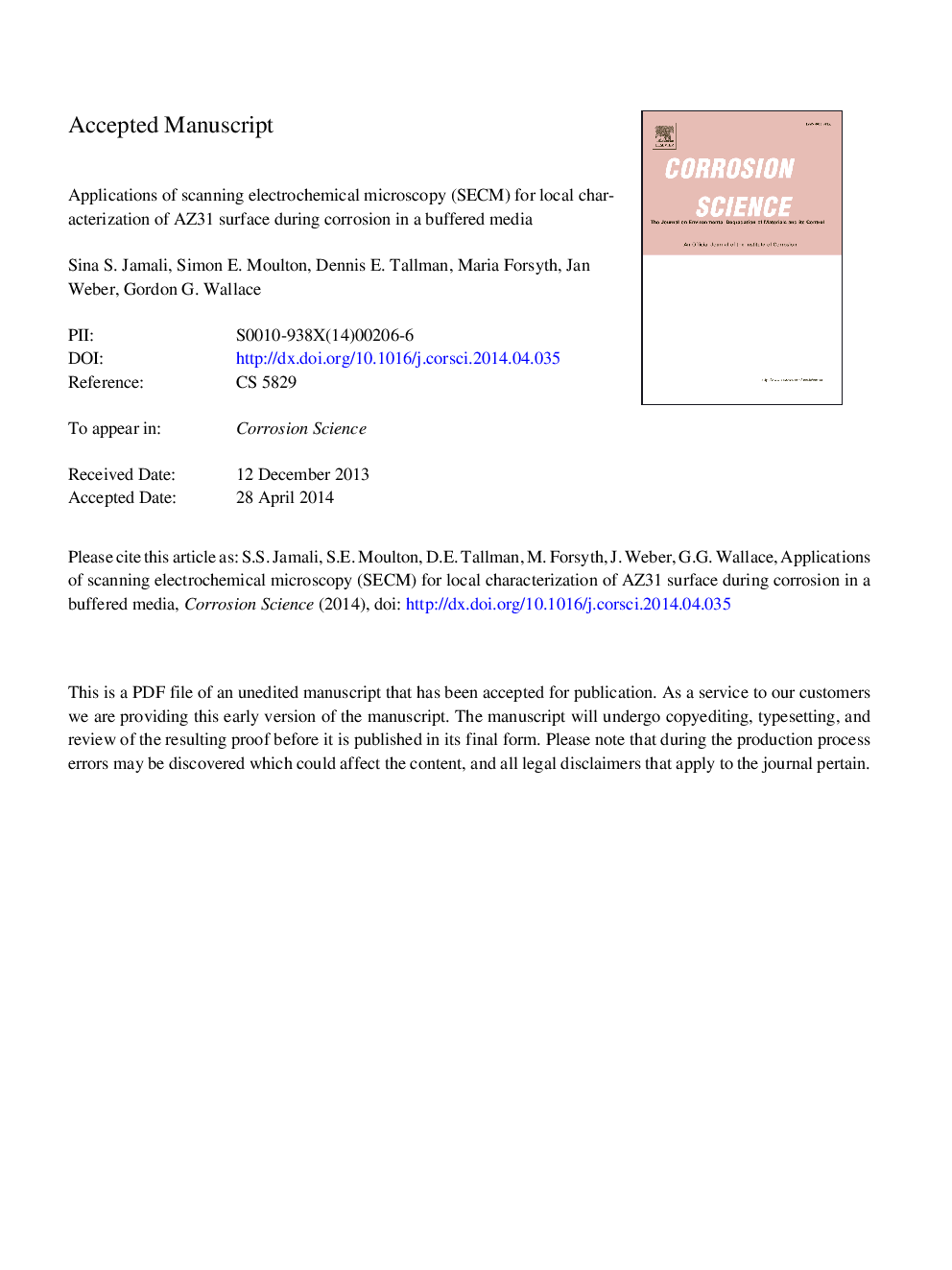| Article ID | Journal | Published Year | Pages | File Type |
|---|---|---|---|---|
| 7895601 | Corrosion Science | 2014 | 29 Pages |
Abstract
Different modes of scanning electrochemical mapping (SECM) such as surface generation/tip collection (SG/TC), amperometry, AC-SECM and potentiometry were employed to characterize the active/passive domains, hydrogen gas (H2) evolution and local pH on a corroding surface of AZ31 in simulated biological fluid (SBF). It was found that the main domains of H2 evolution are associated with lower insulating properties of the surface as well as higher local pH. The near surface pH was found to be highly alkaline indicating that, even in a buffered solution such as SBF, the local pH on a corroding AZ31 surface can be significantly different to the bulk pH.
Keywords
Related Topics
Physical Sciences and Engineering
Materials Science
Ceramics and Composites
Authors
Sina S. Jamali, Simon E. Moulton, Dennis E. Tallman, Maria Forsyth, Jan Weber, Gordon G. Wallace,
